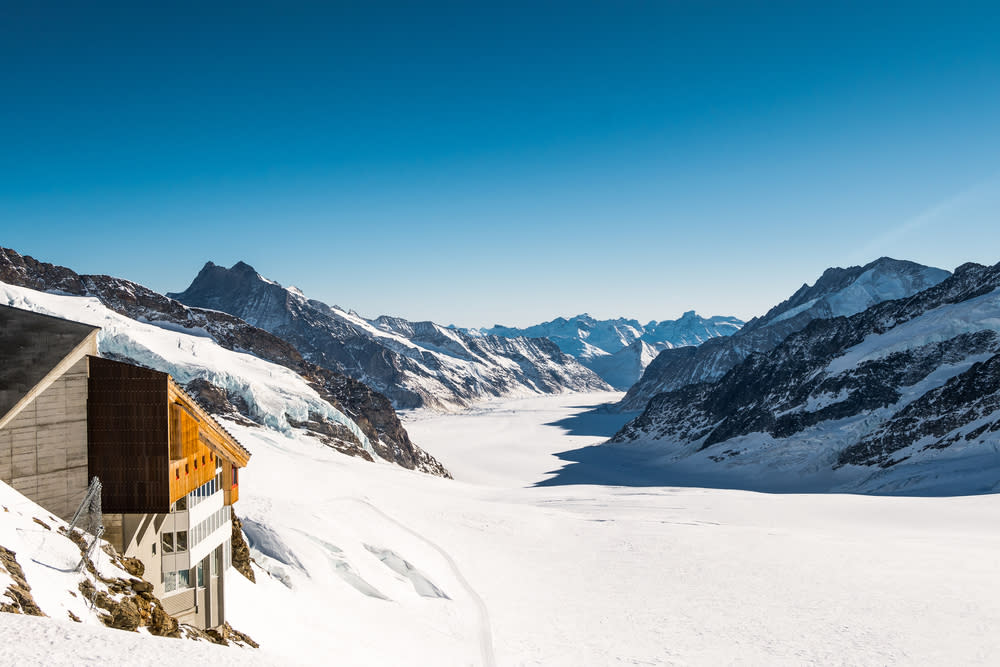More from Jungfrau
Main Menu
- 00:00
- 06:00
- 12:00
- 18:00
- 23:00
Jungfrau : Next 24-Hour Weather
Today - 25th April 2025
Sunrise 06:24
Sunset 20:31
Tomorrow - 26th April 2025
Sunrise 06:24
Sunset 20:31
Holiday Weather Now
Sorted by popularity:
Updated at 14:00 GMT
-
Temp feels like11°C52°F
-
Length of day14h 07m
-
Pressure30" (1018 hpa)
-
Visibility10 km (6miles)
-
Wind speed5 km/h
Sunrise 06:24
Sunset 20:31
-
Temp feels like:
11ºC (52 ºF)
-
Length of day:
14h 07m
-
Pressure:
30" (1018 hpa)
-
Visibility:
6 miles (10 km)
-
Wind speed:
5 km/h
Jungfrau is a Swiss mountain range surrounded by snow. <?xml:namespace prefix = st1 ns = "urn:schemas-microsoft-com:office:smarttags" />Jungfrauâs climate tends to be extremely cold and often has below freezing temperatures, so needless to say, visitors are advised to come prepared to Jungfrau and pack many warm layers of clothing. Checking the weather forecast is also recommended so visitors know what they can expect before their arrival. <?xml:namespace prefix = o ns = "urn:schemas-microsoft-com:office:office" />
Summer is typically the warmest time of year in Jungfrau but is still very cold, with the average high temperatures being 1°C in June and 3°C in July and August. The average low temperatures are colder still and all below freezing, at -4°C in June and -2°C in July and August!
Snow falls regularly in Jungfrau with 17 days of snow in June, 15 snowy days in July and 14 days of snow in August. Summer, when there is more green than white, is the ideal time to try your hand at mountain biking, climbing, river rafting and (if you dare) bungee jumping!
Autumn weather in Jungfrau only gets colder as they days draw shorter, with an average low temperature of -5°C in September, -7°C in October and -12°C in November. The average high temperatures are not much warmer, at only 0°C in September, -2°C in October and -7°C in November. September and November receive the most snow with 16 days each month, whereas October only has 14 days of snow.
Winter is the most chilly time of year in Jungfrau with average low temperatures at -15°C in December and January and, colder still, 16°C in February. The average highs for the winter months are all below freezing, at -9°C in December and January and -10°C in February, making February the coldest month of the year. There are 15 days of snow in December and 14 snowy days each in January and February.
Spring is when the weather begins to warm up once more but climate conditions are still cold, at an average low temperature of -14°C in March, -7°C in April and just -2°C in May. The average low temperatures in spring are 14°C in March, -13°C in April and -7°C in May. Spring is the season with the most days of snow, with 17 days of snow in March and 20 days of snow in May. April has more snow days than the rest of the year with 21 snowy days.
Jungfrau is the ideal holiday resort for lovers of snow and fun. If visitors can embrace the cold, there are all sorts of activities one can do in the snow and ice, whether it be skiing or tobogganing down Jungfrauâs slopes, hiking and exploring the mountain range for breathtaking and beautiful views or visiting the Ice Palace for detailed ice sculptures, there is something for all.
Should you want to explore the mountain range without walking too far, Jungfrauâs âfirst flyersâ enable you to do just that; like a cable car but for individuals, visitors can soar across the mountain landscape supported by steel cable, so visitors can effortlessly and safely enjoy the views.

















